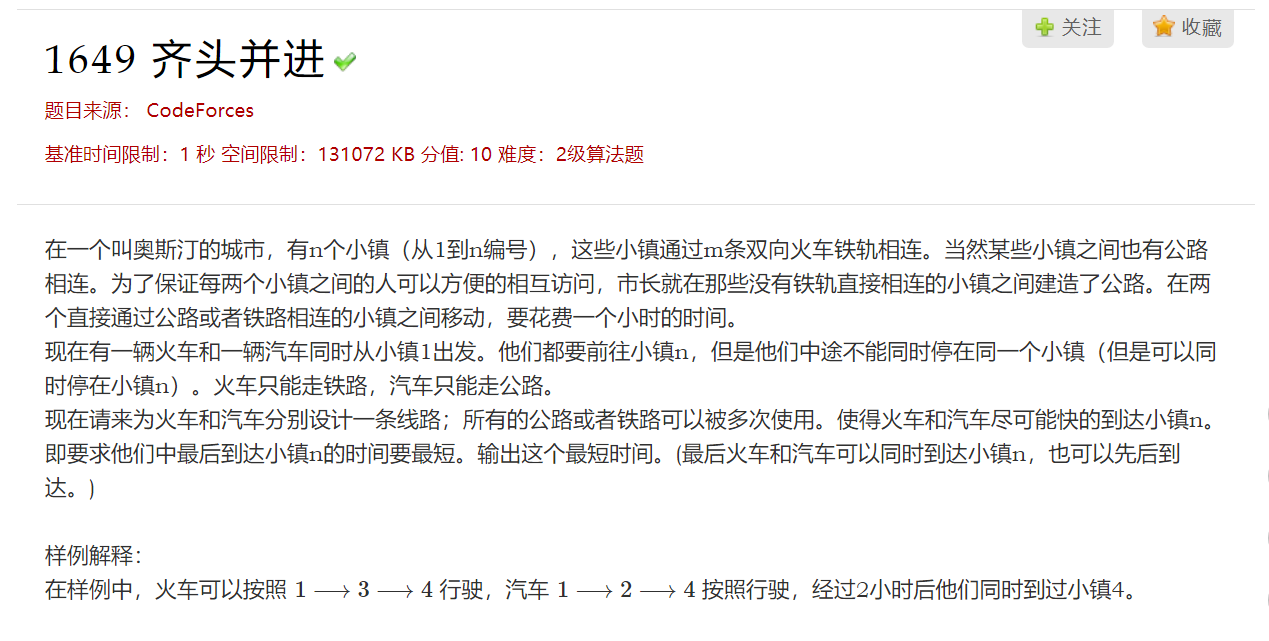题目:

这道题有一个坑点:两种交通工具同时出发,中途不能停留在同一个小镇。
其实想通了就很简单,因为要么火车一步到达,要么汽车一步到达。不可能停留在同一个地方。
可是我还WA了好几次,蠢哭。想用BFS写,一直TLE,后来想到这点之后,用djikstra求单源最短路径就出来了。
如果火车一步到,就求汽车的单源最短路径;如果汽车一步到,就求火车的单源最短路径。
代码:
#include <iostream> #include <algorithm> #include <map> #include <vector> #include <set> #include <math.h> #include <queue> #include <assert.h> #include <stdio.h> #include <stdlib.h> using namespace std; typedef long long ll; //#define INF 2147483647 #define INF 2000000000 int n,m; #define MAX_V 410 int cost[MAX_V][MAX_V]; //cost[u][v]表示e = (u,v)的权值 int d[MAX_V]; //源点s出发的最短距离 bool used[MAX_V]; //标记使用过的点 int djikstra(){ fill(d,d+n+1,INF); fill(used,used+n,false); d[1] = 0; while(true){ int v = -1; for(int i = 1;i <= n; i++){ if(!used[i]&&(v == -1 || d[i] < d[v])) v = i; } if(v == -1) break; used[v] = true; for(int i = 1;i <= n; i++){ if(cost[v][i] == 1){ d[i] = min(d[i],d[v]+cost[v][i]); } } } if(d[n] == INF) return -1; else return d[n]; } int main() { cin >> n >> m; for(int i = 1;i <= n; i++){ for(int j = 1;j <= n; j++){ cost[i][j] = -1; if(i == j) cost[i][j] = 0; } } for(int i = 1;i <= m; i++){ int u,v; cin >> u >> v; cost[u][v] = 1; cost[v][u] = 1; } if(cost[1][n] == 1){ for(int i = 1;i <= n; i++){ for(int j = 1;j <= n; j++){ cost[i][j] = -cost[i][j]; } } } cout << djikstra() << endl; return 0; }